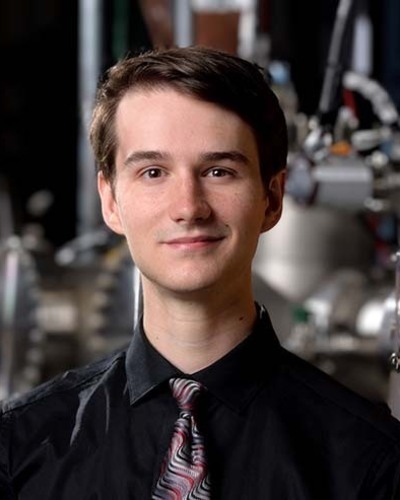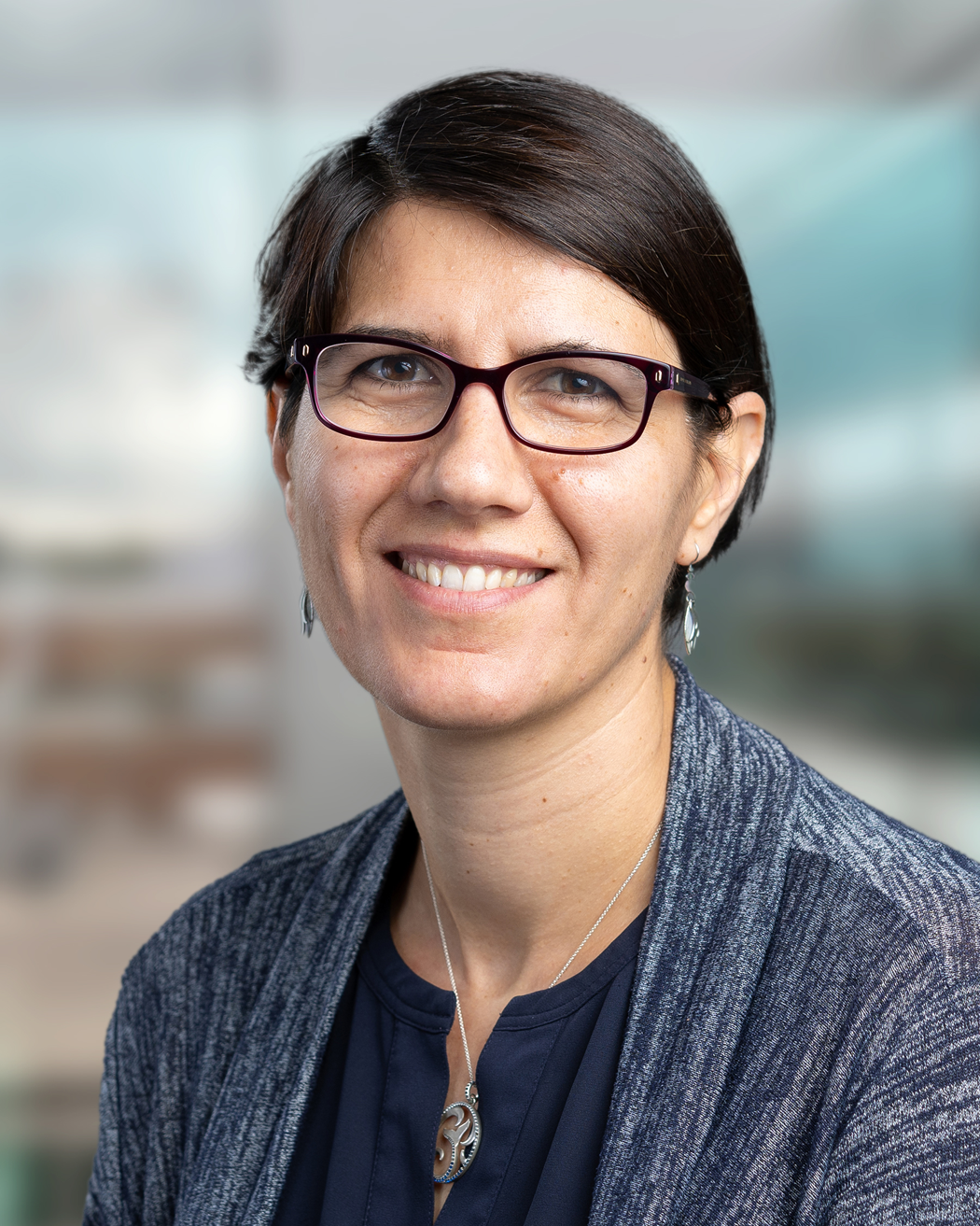A team of researchers at the Facility for Rare Isotope Beams, or FRIB, at Michigan State University discovered that cobalt-70 isotopes form different nuclear shapes when their energy levels differ only slightly.
The findings, published in Nature Communications Physics, shed light on the dynamic, complex nature of exotic nuclear particles. The team included Artemis Spyrou, professor of physics at FRIB and the MSU Department of Physics and Astronomy; Sean Liddick, associate professor of chemistry at FRIB and the MSU Department of Chemistry as well as Experimental Nuclear Science department head at FRIB; Alex Brown, professor of physics at FRIB; and Cade Dembski, former FRIB student research assistant. Dembski, now working on his doctorate at the University of Notre Dame, served as the paper’s lead author.
“When we first started this project, it was motivated by the astrophysical side of nuclear science research, instead of focusing on nuclear structure,” Dembski said. “As we continued with our data analysis, though, we couldn’t quite understand all of the patterns we were seeing. It turned out the reason was due to some interesting nuclear structure effects that we were not expecting, and we ended up writing the paper about those effects.”
The team used the Summing Nal Detector, or SuN, at the National Superconducting Cyclotron Laboratory, FRIB’s predecessor, to conduct its study. They found both spherical and deformed states of cobalt-70 in the experiment. The results showed that the short-lived, exotic isotope ultimately exists as a transition between chromium isotopes with a similar atomic number and the spherical ground states of neutron-rich nickel isotopes.
Understanding shape coexistence helps sharpen studies of exotic nuclei
In nuclear physics, researchers have long focused on studying nuclei with “magic numbers” of protons or neutrons. Nuclei with magic numbers demonstrate more stability than their atomic neighbors, meaning they are slower to decay. These nuclei differ from their neighbors, and researchers have long focused research on their properties.
Isotopes with magic numbers of protons and neutrons usually have spherical shapes in the ground state. However, minor energy fluctuations can occasionally cause the same nucleus to adopt a completely different shape. This phenomenon, known as shape coexistence, helps researchers study how different shapes can exist within the same nucleus. These shapes help scientists better understand complex atomic behavior in exotic systems.
“We want to understand the shape of the nucleus as a function of its proton and neutron numbers,” said Liddick. “Most people think of the nucleus as a sphere, but we know that the shape of nuclei can vary quite a bit. And in certain cases, two different shapes coexist at relatively close energies. It is important for us to understand this interplay, because in regions where this happens, we see a lot of change in the structure of the nucleus over a small number of proton and neutron numbers.”
In its investigation, the team studied the nuclear decay chain of iron-70 to cobalt-70 and then to nickel-70. The team used a technique called total absorption spectroscopy, or TAS. When researchers shoot a high-energy beam at a stationary target in a particle accelerator, they produce various isotopes. The researchers then select a subset to study, which are sent to the experimental equipment that allows scientists to chart the gamma rays following their respective decays.
Scientists use small, specialized detectors that capture gamma ray energy coming off the decaying nucleus. In this case, though, the team needed to focus more on the total energy emitted during the experiment. “Small-sized detectors are a lot better at identifying these gamma rays’ energy, but it is hard to tell exactly where those gamma rays are coming from,” said Spyrou, project lead. “In using TAS, we are using a large-volume detector. The goal is not to identify every single gamma ray’s energy but rather sum all the energy coming from the decay. If I capture all the gamma rays in this way, I can tell you exactly where they started from. This is the advantage of our technique, because if we want to pay attention to particles that exhibit shape coexistence, we need to really chart the whole path of their decay.”
The team used SuN for the TAS technique. What they found surprised them: In its data analysis, the team found cobalt-70 particles exhibiting both spherical and deformed states. These nuclei demonstrated shape coexistence and did so with one of the smallest energy differences recorded when documenting this phenomenon. The finding not only provides a strong test for nuclear models at the far reaches of our understanding of nuclear structure, but it also provides further motivation for researchers to study other nearby isotopes.
MSU-FRIB relationship provides fertile ground for next-generation physicists
Dembski began working with Spyrou’s SuN group as an undergraduate student at MSU. While the team’s original experiment focused on astrophysics research instead of nuclear structure theory, these unexpected findings intrigued Dembski. “This work had a roundabout way of getting to this very pure nuclear structure project,” he said. “By the time we did get to focus on it, I was very invested in it, as I’m interested in nuclear structure more broadly and could see it having a significant role in my career.”
By having easy access to the facilities on campus during his MSU undergraduate studies, Dembski could take ownership of this research. In the process, he became the first author on a high-impact journal publication for work he was focused on before he started graduate school.
For the FRIB researchers, working closely with motivated students like Dembski not only enables them to support a broader range of research topics with each experiment, but also establishes strong relationships with future leaders in the field.
“I thoroughly enjoy continuing to collaborate with undergraduate and graduate students and postdoctoral researchers that have worked with us,” Liddick said. “While some go into government, some go into industry, and some work in academia, it is nice to watch their progress over the years and see them transition from junior researchers to professionals in the field.”
“While some of our students move on and develop a different research focus, others seem to really like the work we do and wind up coming back to submit proposals to run experiments here at FRIB,” Spyrou said. “These collaborations can last for many years. Cade still has time to decide what he wants to focus on specifically in his career, but I would love to continue to collaborate with him — in science, we’re all driven by what excites us, and if this is exciting for him, then our paths will continue to cross.”
Dembski envisions continuing collaboration with the SuN group at FRIB during his graduate studies at the University of Notre Dame. The group plans to run a new experiment this summer at FRIB that focuses on the nuclear region around tin, made possible by FRIB’s capabilities that are opening new research avenues.
Michigan State University (MSU) operates the Facility for Rare Isotope Beams (FRIB) as a user facility for the U.S. Department of Energy Office of Science (DOE-SC), with financial support from and furthering the mission of the DOE-SC Office of Nuclear Physics. Hosting the most powerful heavy-ion accelerator, FRIB enables scientists to make discoveries about the properties of rare isotopes in order to better understand the physics of nuclei, nuclear astrophysics, fundamental interactions, and applications for society, including in medicine, homeland security, and industry. User facility operation is supported by the DOE-SC Office of Nuclear Physics as one of 28 DOE-SC user facilities.
This research used resources of the National Superconducting Cyclotron Laboratory (NSCL), which was a National Science Foundation (NSF)-supported user facility.
The U.S. Department of Energy Office of Science is the single largest supporter of basic research in the physical sciences in the United States and is working to address some of today’s most pressing challenges. For more information, visit energy.gov/science.
This story originally appeared on the Facility for Rare Isotope Beams website.



